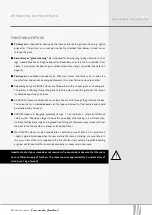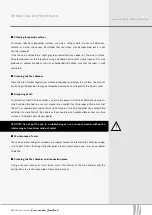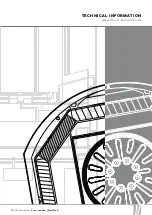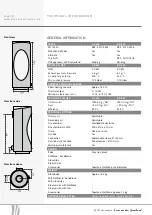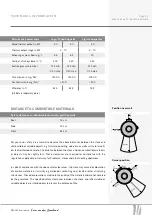
DROOFF Kaminöfen —
Feuer aus dem Sauerland
Page 8
w w w . d r o o f f - k a m i n o f e n . d e
OPERATING INSTRUCTIONS
SUITABlE FUElS
For information on the fuels approved for use in your DROOFF stove, refer to the data sheet
"Technical Information" or the plate mounted on the stove.
Wood — our fuel
There are many reasons why wood is an important raw material and source of energy. It is a
renewable material which grows "at our own front door". Our forests are cultivated sustainably,
i.e. the same amount of wood matures at any given time as is harvested or burned. Whether
the wood is burned or lies on the ground and rots, it emits only the same amount of CO
2
as
the tree has absorbed during its life. Wood is also cheaper than oil or natural gas. A wood-
fired stove is therefore the most effective way of keeping heating costs down.
n
logs
Use only dry wood! Logs have to be stored in the open air for a period of 1.5- 2.5 years to
achieve a residual moisture content of between 15% and 20% which is most suitable for burning.
To measure the residual moisture content of wood, use a standard moisture measuring instru-
ment which you can purchase from your dealer. The calorific value of wood depends to a great
extent on its quality and moisture content. The more water it contains, the more heat is
required for its evaporation during combustion. That means that the damper the wood is, the
lower its calorific value.
Freshly cut wood contains a lot of moisture and therefore burns badly. The heat it gives off
(i.e. its calorific value) is low and it pollutes the atmosphere. In addition, the high amounts of
conden sation and tar in the smoke gas lead to undesirable deposits in the stove and the
chimney and obscure the glass window more quickly.
The calorific value of wood differs from one type of wood to another. In relation to their weight,
the calorific value of soft woods such as spruce, pine or fir is considerably higher than that of
harder woods such as birch, oak or beech. However, in relation to their volume, it is the harder
woods which have a higher calorific value.











